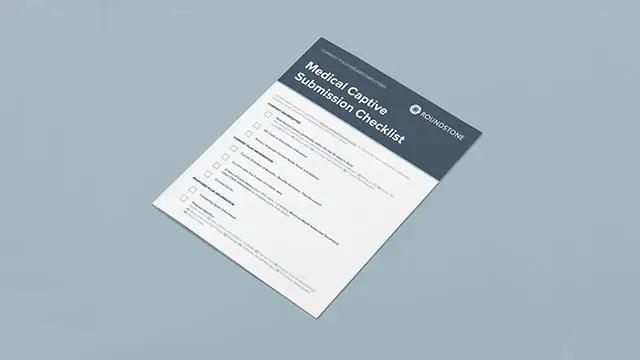Highlights
- The reasons health insurance is expensive include rising prescription drug costs, hospital consolidations, increased hospital labor costs, overall inflation, and a lack of transparency in healthcare pricing.
- Employers can lower medical expenses by negotiating lower rates and incentivizing preventive care, telemedicine services, and generic prescriptions.
- Incorporating health literacy and wellness programs into your benefits plan can help you meet your company’s needs and stay within budget.
- Switching to a self-funded group captive plan lets you design your own health insurance plan and save money.
Skyrocketing employee health insurance premiums make it challenging for companies and their employees to afford healthcare. What can we do about it? Understanding why health insurance is expensive is a great place to start. Having the right information can help you make better decisions when designing a plan that meets your company’s needs and budget.
Who Has the Most Expensive Healthcare in the World?
With costs in 2021 estimated to be $12,318 per person, the U.S. has the most expensive healthcare in the world by far, according to the World Economic Forum. Germany comes in a distant second at $7,383 – 40% lower. Costs for France, Canada, the United Kingdom, Australia, and Japan average about $5,000 per person.
Sadly, we’re not getting much for our money. Despite our enormous healthcare spend, the U.S. lags behind most developed nations when it comes to life expectancy. It ranks in the bottom half of countries in the Organization for Economic Cooperation and Development (OECD), a collection of high income nations, according to the Council on Foreign Relations.
Why Are You Seeing Annual Health Insurance Premium Increases?
Health insurance premiums are a top concern for over one-third of insured Americans, with 44% worrying about paying the deductibles before insurance coverage kicks in for their medical care. Many factors contribute to increased health insurance premiums, including high prescription drug costs, hospital system consolidations, and a lack of transparency in claims data from traditional insurers.
Increase in Prescription Costs
A 2022 study revealed that the launch prices for new drugs increased by 20% each year from 2008 to 2021. Inflation trends increased prescription costs in 2022. The Department of Health and Human Services reported 1,216 drugs had an inflation rate of over 8.5%, with an average increase of 31.6%. Some drugs even increased by over $20,000 — 500% — in 2022.
Traditional insurance companies often restrict patient access, increase premiums, or impose unaffordable out-of-pocket costs due to the increase in brand-name drug prices. Many people struggle to afford necessary healthcare and prescriptions due to high costs. One in four adults report having to skip doses of medicine, cut pills in half, or not fill prescriptions in the past year because of the expense.
Under a self-insured plan, you can implement pharmacy rebates that significantly lower prescription costs and encourage employees to take the medications they need.

Consolidation of Hospital Systems
Consolidation among hospitals and hospital systems is one of the major drivers of why health insurance is expensive. When out-of-market hospital systems acquire hospitals, prices can rise by 17% compared to independent hospitals. Merging hospitals across markets increases their bargaining power with insurers.
For example, hospital systems may require insurers to include all hospitals in their networks, even when lower-cost alternatives are nearby, resulting in increased expenses for people seeking care.
Providing a simple way for your members to navigate the healthcare system in your provider network can help ensure you are getting the highest quality care and not overpaying for services.
Hospital labor costs have also skyrocketed, which is another reason why health insurance is so expensive. Total contract labor expenses jumped 257.9% from 2019 to 2022, according to Healthcare Finance News.
Lack of Transparency in Data and Cost
Finding consistent and transparent pricing information from hospitals or insurance companies is challenging for most consumers. According to the Centers for Medicare and Medicaid Services (CMS), insurers often raise rates without explaining their reasons to regulators or the public.
Most consumers are unaware of proposed premium increases and the reasons for raising rates. As a result, insurance companies can operate with little scrutiny from consumer markets.
One advantage to self-funded insurance is data transparency. You can track every cent of your benefits spend, which means you can institute cost containment costs to lower costs and save money on health insurance. Roundstone’s specialized team works one-on-one with you to optimize savings and improve care quality for your employees.
To learn more about why your company gets annual premium hikes, read Why Does Your Health Insurance Cost Increase Every Year?
Is self-funding right for your company? Find out in our 30-second quiz:
Thank you for taking the quiz!
7 Ways You Can Lower Health Insurance Expenses
With the rising cost of healthcare, learning what to do if insurance is too expensive is more important than ever. The following approaches can save money on healthcare and keep employees healthy and productive.
1. Incentivize Primary and Preventive Care
Creating patient engagement strategies, care coordination incentives, and primary care initiatives can help employers encourage employees to undergo check-ups, immunizations, and screenings. Various health services, such as biometric screening and diabetes management, can detect health problems early when they are more manageable and less expensive to treat. This can reduce emergency room and urgent care visits as well as hospital stays.
2. Implement Wellness Programs
Another way to lower costs is to offer your employees exercise challenges, healthy eating initiatives, and smoking cessation programs as part of your benefits plan to encourage a healthy lifestyle. A 2019 study found that workplaces with wellness programs reported an 8.3% higher rate of regular exercise and a 13.6% greater rate of weight management among employees.
For example, Roundstone participated in the Cleveland Corporate Challenge to encourage fitness and cultivate a fun and healthy working environment.
3. Promote Health Literacy
Low health literacy is one factor contributing to why healthcare insurance is so expensive. Many people need help to understand complex medical terminology, statistics, or self-care instructions, even if they have good reading and math skills. According to the Centers for Disease Control and Prevention (CDC), 9 out of 10 people have trouble reading health information filled with unfamiliar medical terms.
Improving health literacy among your employees can help them use the information to make informed healthcare decisions so you can lower your insurance costs. For example, educate your employees on how to view hospital and insurance carrier pricing sheets or use online pricing websites to understand how much various treatments or care centers cost.
When your employees have better health literacy, you could potentially save on healthcare costs. Health literacy could prevent nearly 1 million hospital visits and save more than $25 billion annually. When employees understand why healthcare is so expensive, they can take proactive steps to reduce their costs.
4. Negotiate with Healthcare Providers
Employees can negotiate with their healthcare providers to reduce the cost of certain treatments or procedures. Negotiation can include asking about discounts offered for paying cash upfront or exploring charity programs the hospital may offer.
Health plan members can also consider discussing alternative treatments or medications with their providers. These options are often still effective but may cost less than traditional approaches.
For example, if an employee has high blood pressure, their doctor may prescribe a name-brand statin medication. To lower costs, the employee could discuss alternative options, such as a generic medication or diet and lifestyle changes that can positively impact the condition.
5. Provide Telemedicine Services
Choosing a plan with telehealth coverages can minimize healthcare costs and increase productivity. These services allow employees to consult with healthcare providers remotely, reducing the need for in-person visits.
A 2023 study of 25,496 telehealth visits concluded that telehealth helped people save over $1,170,160 in lost income due to not having to drive to their providers’ offices.
6. Encourage Generic Prescriptions
You can inform employees about the cost savings of generic drugs through newsletters, posters, and website resources. Tiered prescription plans with lower copays for generics in your insurance plan can also promote generic use.
Employees can access generic prescriptions or discount programs to lower healthcare costs. For example, sites like SingleCare and GoodRX work with popular pharmacies like Walmart, CVS, Walgreens, and Rite Aid to provide discounted medications, sometimes up to 80% off.
Some pharmacies offer medications at a lower cost to people who join as a member. For instance, Walgreens Plus members get discounts on generic and name-brand medications on their medication list, including commonly prescribed drugs like lisinopril, warfarin, and metformin.
Working with a Pharmacy Benefits Manager is another great way to lower your prescription costs.
Interested in learning more ways to lower your prescription drug costs? Download our free eBook, Strategies to Contain the Rising Costs of Pharmacy.

7. Switch to Self-Funding with Roundstone
While there are things you can do to decrease your health insurance spend, switching to a self-funded employer health insurance plan may be the single most effective way to save money while offering your employees higher-quality coverage. Once affordable only for large corporations, self-funding is now an option for smaller companies with a self-funded group captive insurance plan through Roundstone.
Roundstone’s Group Medical Captive pools hundreds of small to midsize businesses together, leveling risk so they can self-insure with confidence. Thanks to the captive, a company with as few as 25 employees can self-insure with the same risk predictability as a Fortune 500.
Roundstone’s affordable small business health insurance offers the control, flexibility, and transparency you need to lower your healthcare benefits spend.
By self-insuring through Roundstone’s self-funded group captive plan, you can:
- Create a customized coverage plan. This can be an effective way for companies to provide their employees with the medical and prescription coverage they need while managing costs. For example, offering well-being programs and encouraging employees to choose primary care over urgent care can help employees achieve a healthy lifestyle.
- Choose your own partners. A Roundstone plan lets you choose your third-party administrator (TPA), pharmacy benefits manager (PBM), provider network, and vendors. With Roundstone, you have the flexibility of choosing partners who work for you, not your insurance company.
- Access your claims data with Roundstone’s CSI Dashboard. While fully insured insurance carriers don’t want you to see this information, Roundstone believes that your claims data belongs to you. Our Cost Saving Investigator (CSI) Dashboard empowers you to see how your employees are using their benefits so you can make cost-saving adjustments to your coverage without having to wait for annual renewal time.

Exploring Self-Funding Options to Control Expensive Health Insurance Costs
By switching to a self-funded insurance plan with Roundstone, you can save significant money on your healthcare expenses while providing your employees with customized and comprehensive coverage. Roundstone members consistently save 20% in healthcare costs year over year. What’s more, we return your unused premiums to you in an annual distribution check.
In fact, two-thirds of our customers save enough in their first four years with us to pay the claims for their entire fifth year. And 100% save money — full stop.
With the peace of mind that comes with a self-funded insurance plan, you can be confident that you’re investing wisely in your company’s future.
Contact us today to learn more about our self-funded group medical captive plan. Let us help you take the first step towards financial peace of mind and long-term savings.











